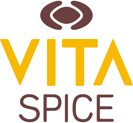| |
|
 |
|
|
|
| Clove |
 |
 |
 |
 |
 |
 |
The clove, Syzygium aromaticum, is a plant of the Myrtacea family, native to the Maluku islands in Indonesia. It has been introduced to South America in the 20th century.
In recent years, clove production in Brazil has been around 6.000 tons annually. It extends on a surface of about 4.000 km ², in a region called “Costa do Dende”, 150 kms south of Salvador, the capital of Bahia. Endowed with a warm and wet climate, Costa do Dende is suitable for the growing of this spice.
Clove growing is mainly a family activity bringing resources to about 50.000 people.
The harvest generally starts in October in areas near the sea, and three weeks after inside the lands. It ends in February.
The quality of the harvest and of the drying is variable from one micro region to another. The level of professionalism is also very heterogeneous within the purchasers’ population.
Vitaspice is one of the very few exporters to make a direct sourcing. We select scrupulously our regional buying centers and our suppliers. Within the framework of our policy for quality improvement, we offer to farmers the highest prices of the market. |
 |
 |
Vitaspice offers a unique quality range of cloves. Quantities delivered go from a few tons to more than 50 tons for each order.
We deliver a HPS with at least the same quality found in Madagascar and Indonesia but at a definitely lower price.
We propose a CG3 premium which will satisfy our customers seeking a beautiful clove with few impurities and absolutely any foreign matters.
The steam treatment of our HPS and CG3 premium cloves ensures them high microbiological standards.
We offer also a Bahia 1 Special among the best in Brazil.
Our cloves are conditioned and shipped according the wishes of our customers.
|
 |
 |
 |
 |
Indonesia is by far the world’s largest clove producer. More than 90% of the production is used by kreteks manufacturers. These are cigarettes made with a mixture of tobacco and fine cut pieces of clove. Outside Indonesia, kretek consumption is expanding in middle and upper classes of emergent and developed countries.
The second largest producer is Madagascar (south-eastern and northern parts of the island), then follow Brazil, Tanzania (Zanzibar) and Sri Lanka. Zanzibar was historically the world clove leader until the Sixties.
Madagascar has become the largest exporting country. Brazil occupies the second place among the producer countries. Singapore buys regularly more than 50% of the Malagasy production.
Singapore is traditionally a world gravity center for clove trade. It is explained by the legendary know-how of its wholesale merchants and the good available storage capacities. For several years, Dubai, in the United Arab Emirates, has emerged as another great dynamic place.
Apart from Indonesia, the largest consuming markets are India (14.000 tons) and far behind, the USA (1.300 tons).
Clove prices were at low levels during the nineties, then after the peaks of the years 2001 and 2002, they have been on the rise. Owing to a firm demand and limited supplies, it is likely that average world prices remain higher than 3.500 USD/t.
The HPS (Hand Picked Selected) grade accounts for approximately 1% of the world trade and its average price is at least 25% greater than the price of the common clove.
|
 |
 |
 |
 |
 |
|
 |
|
|
|
 |
 |
|
© 2009 . All rights reserved to Vitaspice, Exporter of Spices, Cocoa and Coffee.
Forbidden the copy of any part of this web site without authorization. |
 |
|
|
|
|
|
|